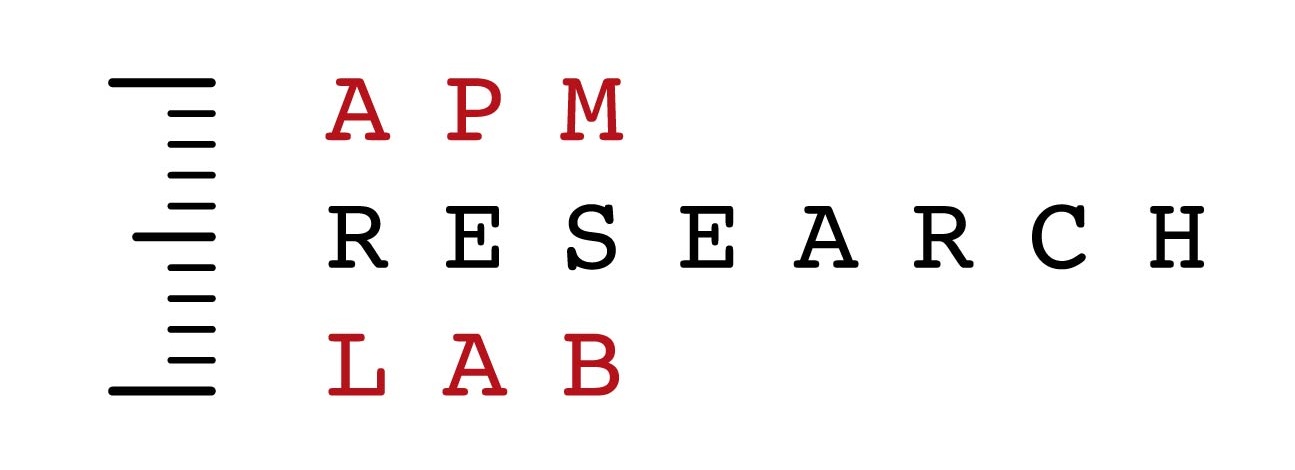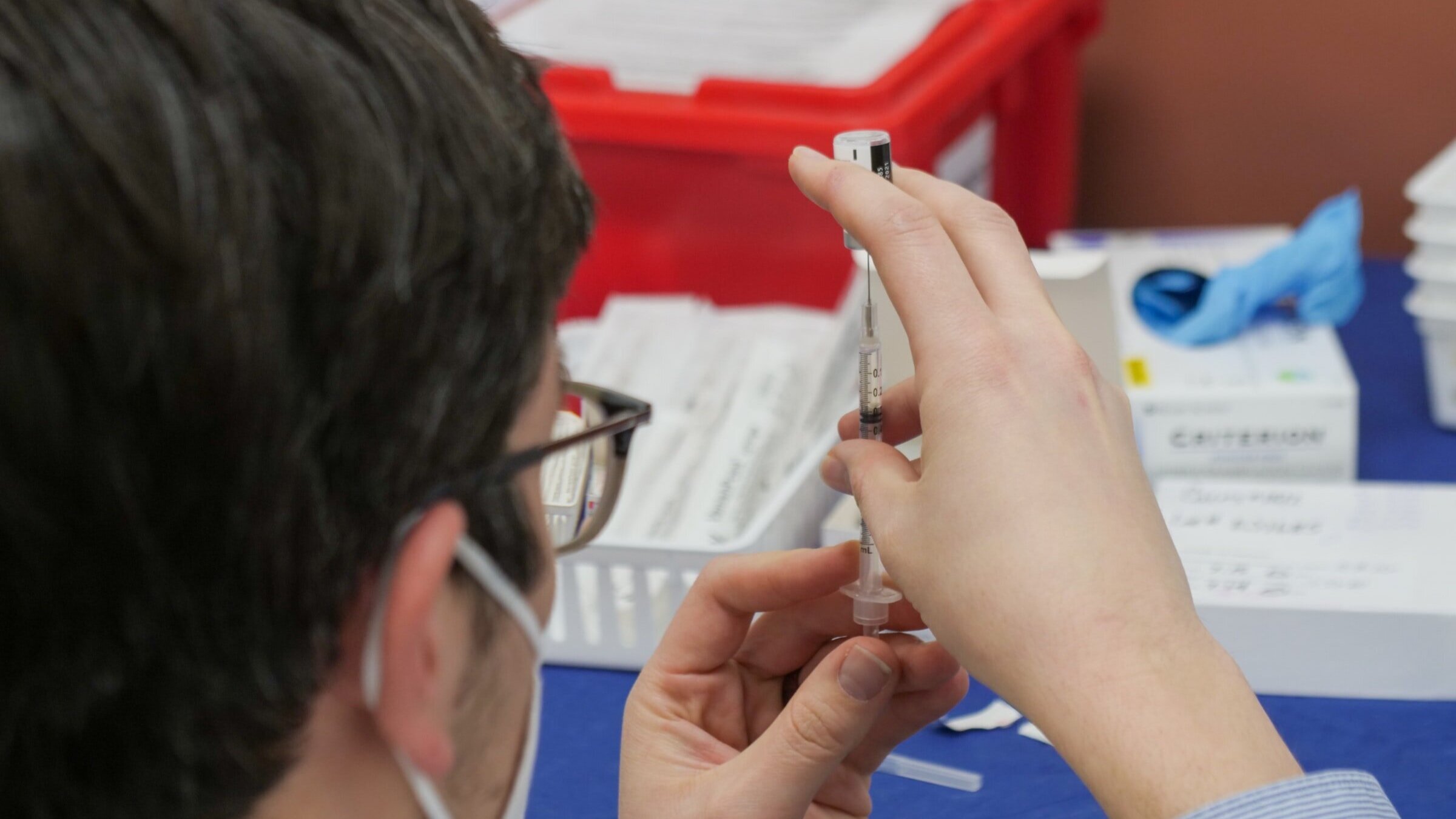U.S. states are far behind COVID-19 vaccination goals
Photo by Steven Cornfield via Unsplash
RELATED STORIES
COLOR OF CORONAVIRUS: COVID-19 deaths by race and ethnicity in the U.S.
COVID-19 VACCINE: What we likely know about uptake by race and ethnicity
RESPONSE PANEL: 10 thought leaders respond to the Color of Coronavirus data
by KRISTINE LIAO | Jan. 25, 2021 | Read our most recent update of this story here
The first light at the end of the tunnel appeared on Dec. 14, 2020. After more than nine months of devastation from the pandemic, the first COVID-19 vaccination in the United States took place that day, marking a pivotal turn in the country’s fight against the virus.
But hopes for a smooth and speedy path to mass immunization have been dampened since then. The process of distributing vaccine doses to states, and then administering those doses into people’s arms, has moved slower than expected.
As new COVID-19 cases and deaths continue to surge in 2021, the need to vaccinate as many people as quickly as possible has become more urgent than ever. Here’s a look at how states have been doing in their vaccination efforts thus far, and how much more ground they need to cover in order to end this pandemic.
How quickly are doses being distributed to states?
The first step of the vaccination process is the distribution of doses to states by the federal government. The amount each state receives is determined by its population.
On Dec. 13, the day before the launch of the national vaccine rollout, Dr. Moncef Slaoui, chief adviser of the U.S. COVID-19 vaccine program Operation Warp Speed, said that he expected to have 40 million doses distributed by the end of December, another 50 million to 80 million distributed in January, and the same range in February.
(Slaoui submitted his resignation on Jan. 12 at the request of the Biden administration but will stay on for 30 days to ensure a smooth transition, CNN reported.)
As of Jan. 24, however, the U.S. has only distributed a total of 41 million doses to its states, districts, and territories, according to the Centers for Disease Prevention and Control—a number that falls below even half of the goal of at least 90 million by the end of this month.
The U.S. is now facing the lack of a national stockpile, meaning there are no extra doses available for states to ramp up vaccinations. In recent weeks, governors and mayors across the country have reported that they do not have enough doses to meet demands in their states, especially at a time when states have begun to expand vaccination eligibility to more of the population.
President Joe Biden, who was inaugurated on Jan. 20, has vowed to deliver at least 100 million shots into the arms of the American people in his first 100 days in office. During his second day in office, Biden announced his plans for a “full-scale wartime effort” to speed things up, including a call for federal agencies to invoke the Defense Production Act if necessary to expand supplies.
How quickly are states administering the vaccine to residents?
Once the federal government distributes the allocated supply of doses to each state, it’s up to the state to administer the vaccine to its residents. This step of the process has also been taking longer than expected for several states. However, in the past week, many have been picking up the pace, and are now limited by delays in federal supply rather than state-specific challenges.
Virginia, the slowest state as of Jan. 24, has administered 42% of its distributed shots. Kansas, Hawaii and California have also been relatively slow, administering less than 45% of their distributed doses.
Meanwhile, North Dakota ranks as the fastest state, administering 84% of its doses. West Virginia, New Mexico and South Dakota have also been performing relatively efficiently, administering more than 75% of their vaccine supply.
How far are states from reaching a level of herd immunity?
According to Slaoui, for the U.S. to halt transmission of the virus, or reach herd immunity, the country would need to immunize about 75% or 80% of the population. Dr. Anthony Fauci, the nation’s leading infectious disease scientist, has been giving similar numbers, setting the range between 70% and 90%.
Slaoui projected that 100 million Americans, or 30% of the country’s population, would be immunized by the end of March, and hoped to reach herd immunity at some point between May and June. However, as of Jan. 24, only 5% of the U.S. population has received the first shot of the vaccine. In order to achieve these goals, states have a lot more ground to cover.
So far, only Alaska has administered the first shot of the vaccine to more than 10% of its population. In Missouri, less than 4% of its population has initiated vaccination; and in 18 states, less than 5% of their population have received the first dose.
How long would it take to reach herd immunity if states continue at their current pace?
Despite the sluggish pace at which people are receiving the COVID-19 vaccines, the process will undoubtedly speed up as states overcome initial hiccups, more people become eligible for the vaccine, and more vaccine candidates are approved, improving supply.
However, it may be helpful to put into context how slow the national vaccine rollout has been thus far to get a sense of how much the country needs to speed things up.
If federal supply does not pick up and states don’t improve efficiency, not only would none of them reach Fauci’s lower threshold of 70% herd immunity by this summer, but barely any states would be on track to achieve herd immunity by the end of 2021.
If states continue at their current pace of vaccination, only Alaska and West Virginia would be able to administer first doses to 70% of their populations before the end of this year. Twenty-five states are vaccinating at a pace that would leave them reaching for the 70% immunity goal until the second half of 2022 or later.
Why have some states been slower than others in vaccinating residents?
As of Jan. 24, Alaska and West Virginia have initiated vaccination for their residents at a rate more than double that of the 10 slowest states. The disparity in states’ vaccine rollouts can be attributed to a variety of reasons. Overall, unclear guidelines from the previous administration have aided in the confusion and delays on the state level. Many states have struggled with limited vaccine supplies from the federal government, systems ill-equipped to handle a huge number of appointments, and in some cases, health care workers who refuse to get inoculated.
California, which ranks 40th in immunizing its population, was delayed by technical issues in the software program it uses to coordinate vaccine distribution. The rollout was also slowed by the state’s initially stringent, tiered guidelines for who qualified for vaccines, which have since been eased to help speed up the process. In the past week, the state’s vaccination efforts have picked up, but are now slowed once again—this time by limited federal supply.
The distribution strategy of each state seems to also have played a big role in the efficiency of vaccine rollouts. Minnesota, ranking 44th in its vaccination efforts, was slowed at first by a federal program that used chain pharmacies to administer shots to long-term care residents. Colorado has also cited the federal pharmacy partnership as a reason for delays. By contrast, West Virginia opted out of the federal program and used local pharmacies instead, and as of Jan. 24 ranks second best for its vaccination rate.
Several states in the Deep South were also falling behind during the first month of the national vaccine rollout, with Alabama and South Carolina continuing to rank in the bottom 10 in vaccination efforts. The issue in this region, according to public health researchers, is partially due to underfunded public health systems that are low on providers and serve a large, hard-to-reach rural population.
Hospitals in rural areas around the country may also face a slower distribution process when it comes to the Pfizer vaccine since it needs to be stored in ultra-cold freezers and used within six hours once thawed and formulated.
Although the U.S. is only at the beginning of its COVID-19 vaccine rollout, the degree at which it has already fallen behind in both distributing and administering these life-saving doses is concerning. As the Biden administration promises to drastically speed up the pace of vaccination, it’s now a race against time to meet the expectations and hopes of Americans across the country.

